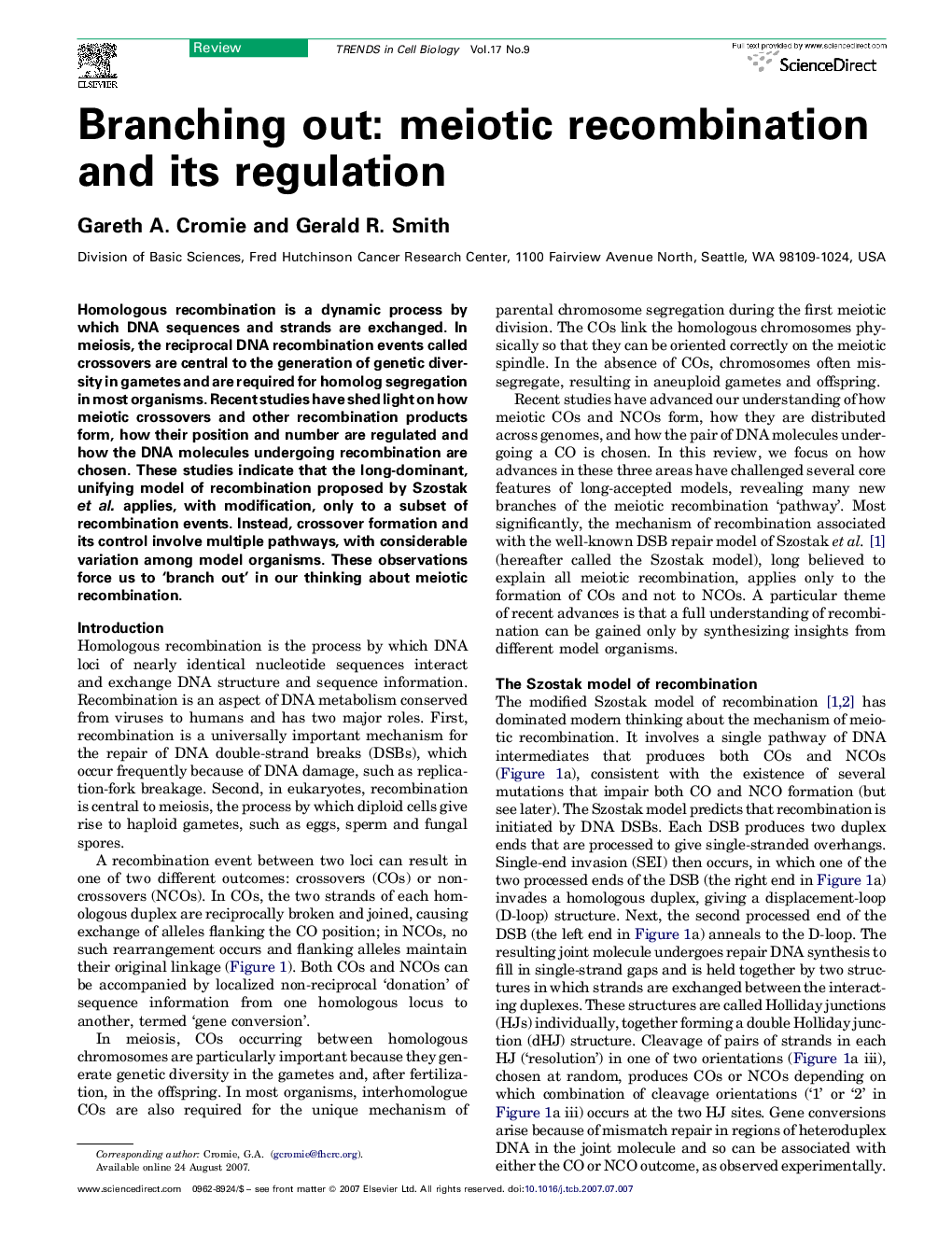| Article ID | Journal | Published Year | Pages | File Type |
|---|---|---|---|---|
| 2205255 | Trends in Cell Biology | 2007 | 8 Pages |
Homologous recombination is a dynamic process by which DNA sequences and strands are exchanged. In meiosis, the reciprocal DNA recombination events called crossovers are central to the generation of genetic diversity in gametes and are required for homolog segregation in most organisms. Recent studies have shed light on how meiotic crossovers and other recombination products form, how their position and number are regulated and how the DNA molecules undergoing recombination are chosen. These studies indicate that the long-dominant, unifying model of recombination proposed by Szostak et al. applies, with modification, only to a subset of recombination events. Instead, crossover formation and its control involve multiple pathways, with considerable variation among model organisms. These observations force us to ‘branch out’ in our thinking about meiotic recombination.
